Rochester Optical Co., Rochester, NY
Commodore
Variation 2
(Base Edges T/G Frame Interior, Rack & Pinon Focus Behind Ground Glass)
4 x 5 Date Introduced: - ;
Years Manufactured: c.
1888
Variation 1:
Variation 2: References:
Back to Rochester Optical Group of Manufacturers
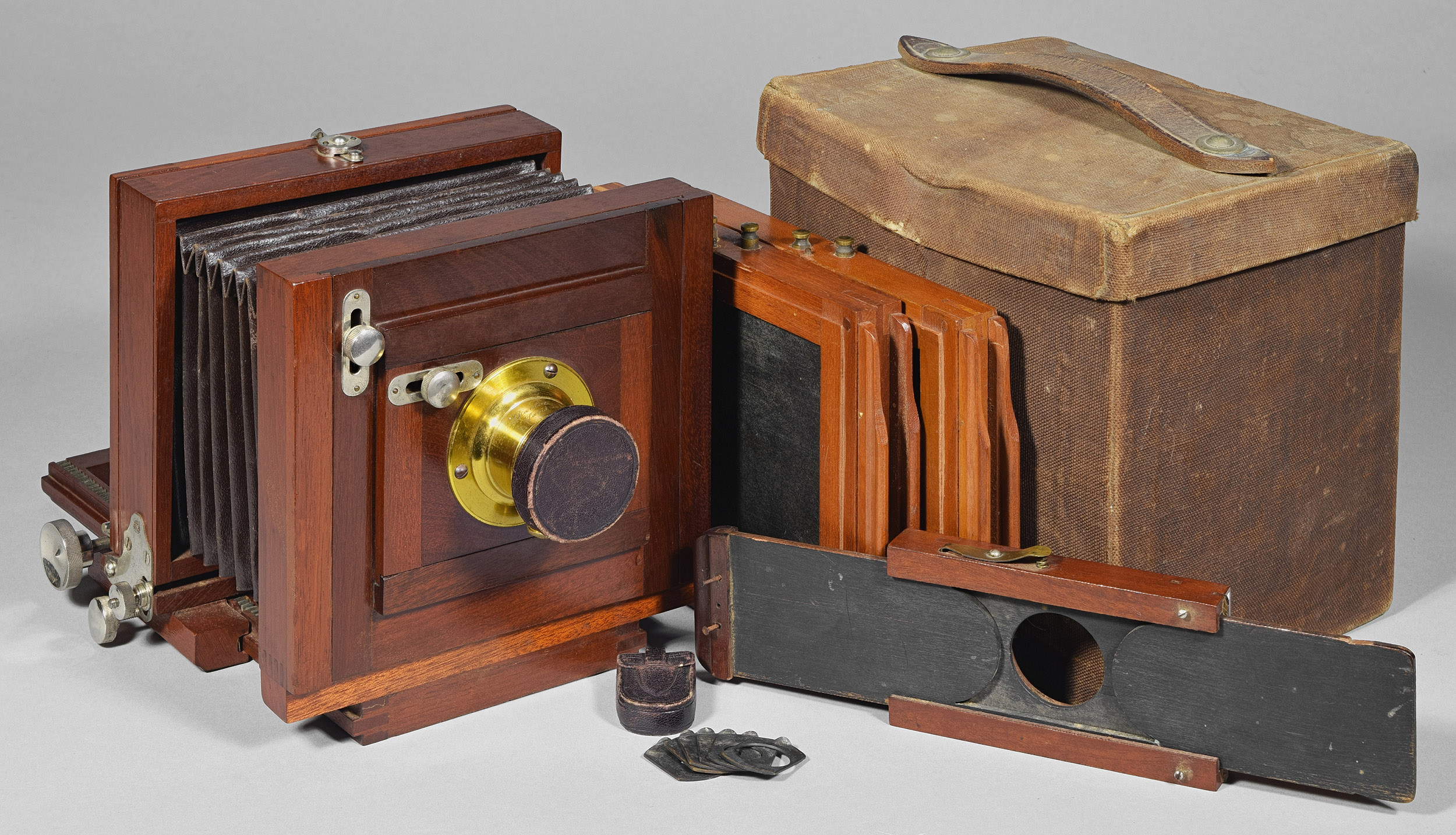
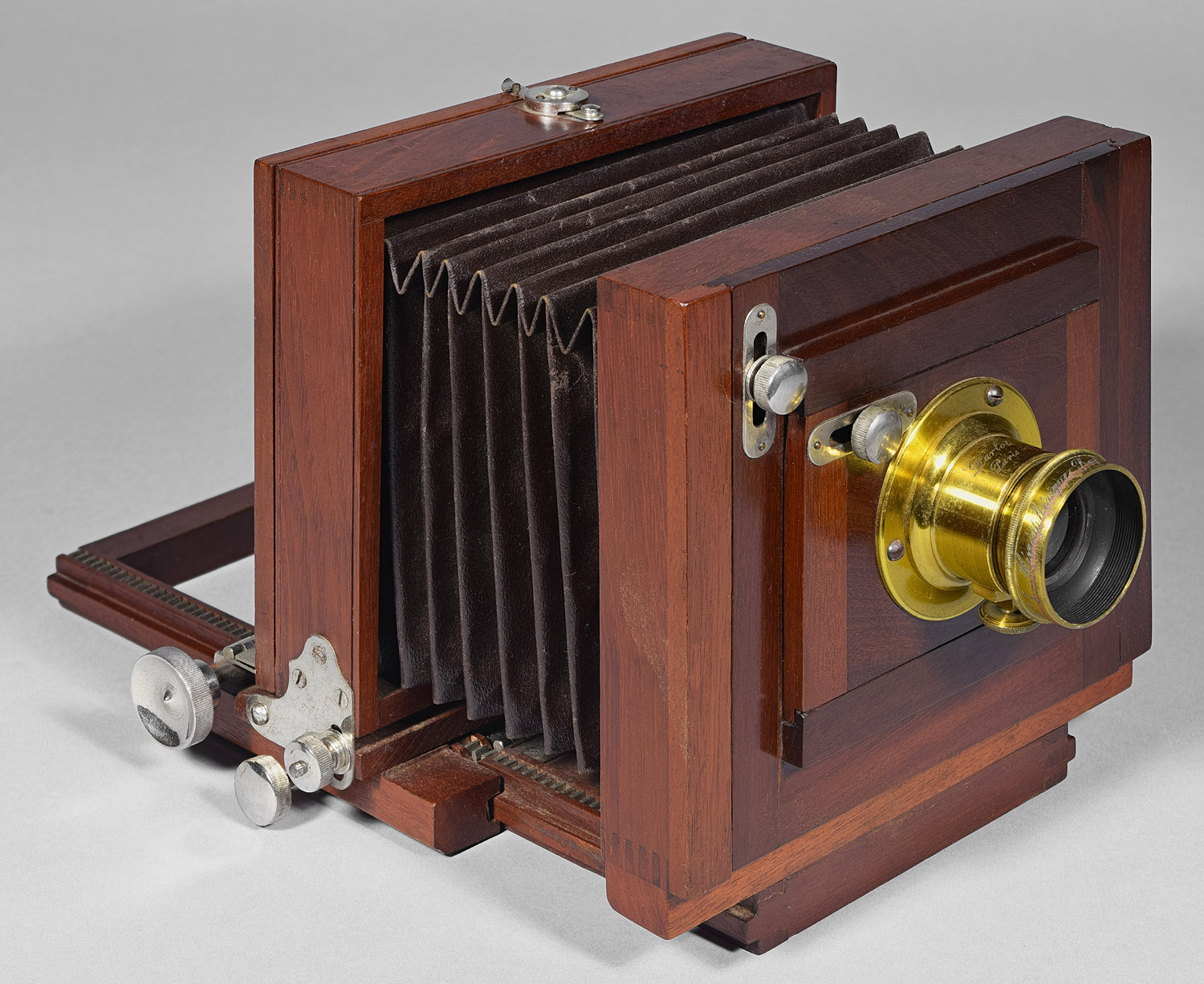
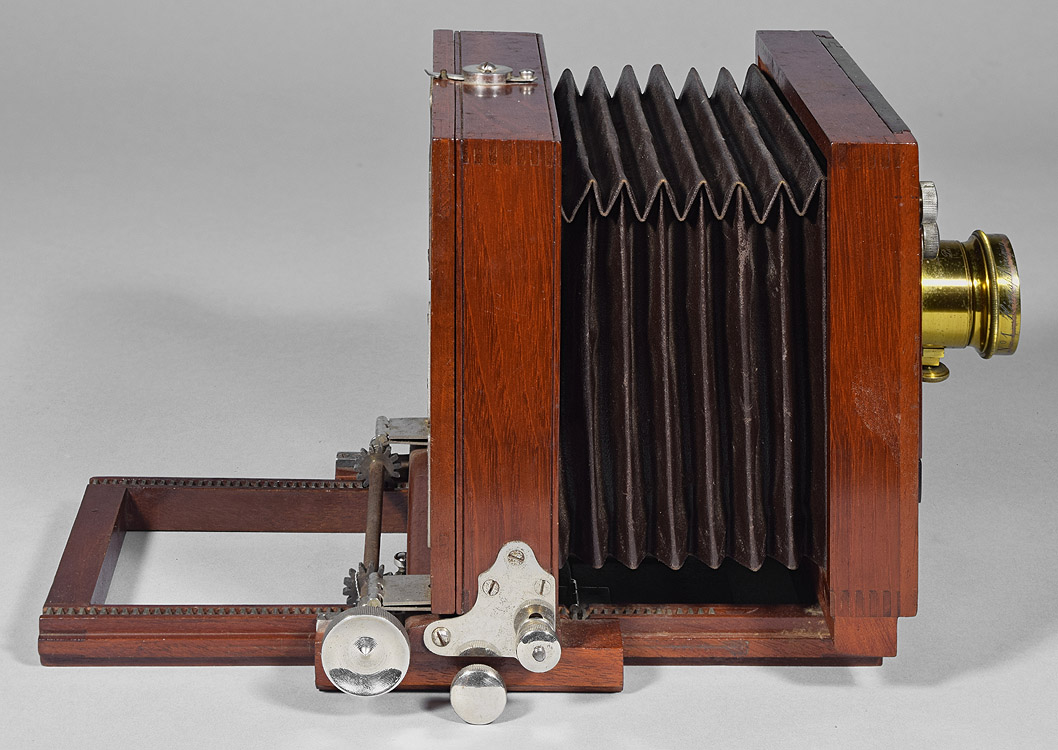
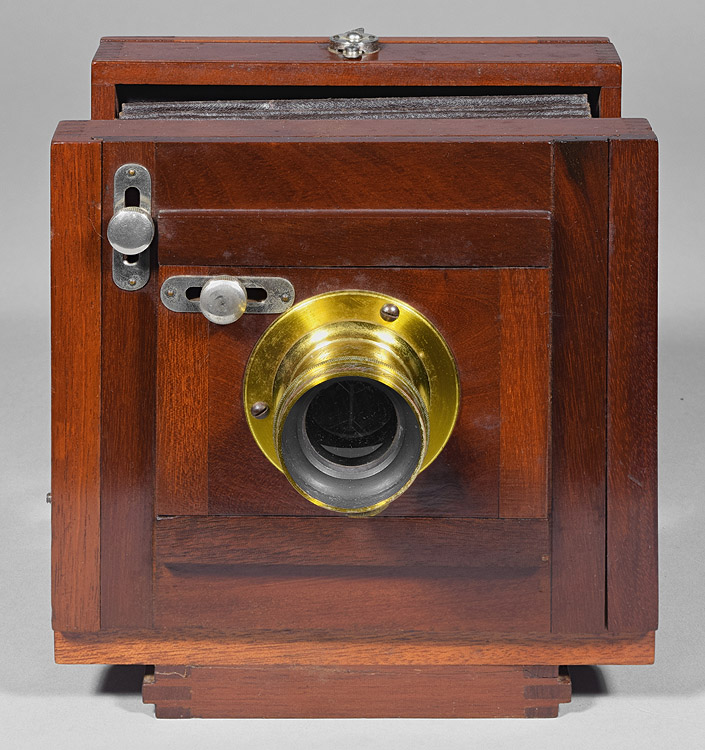
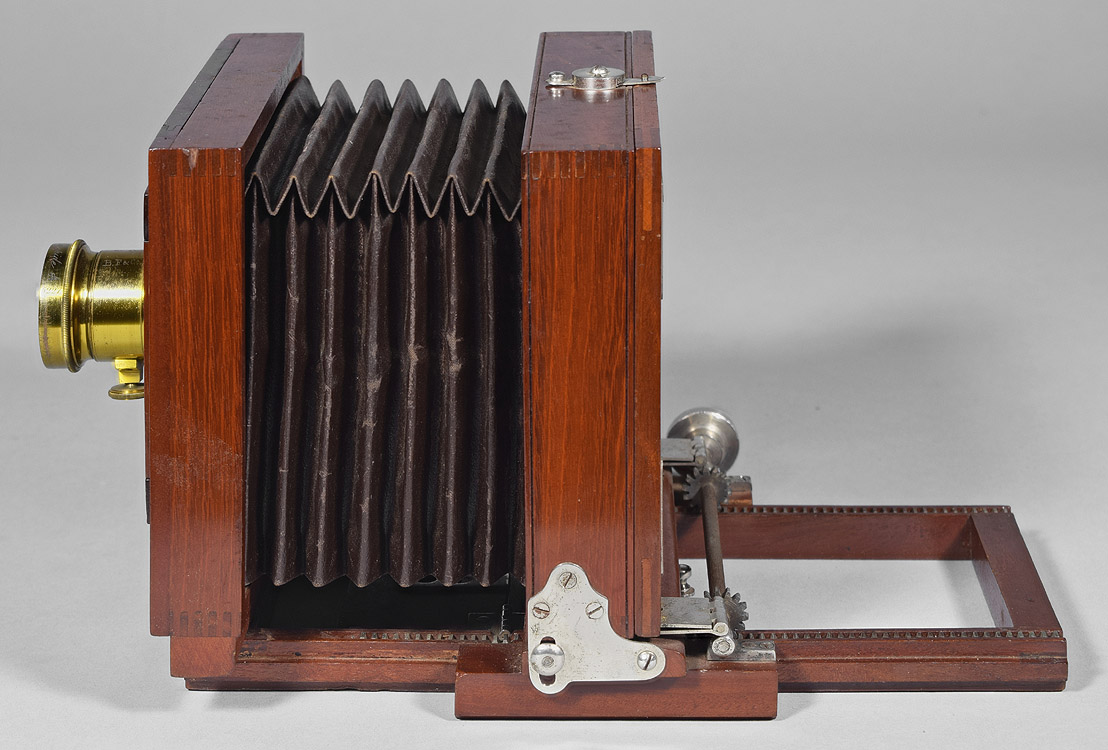
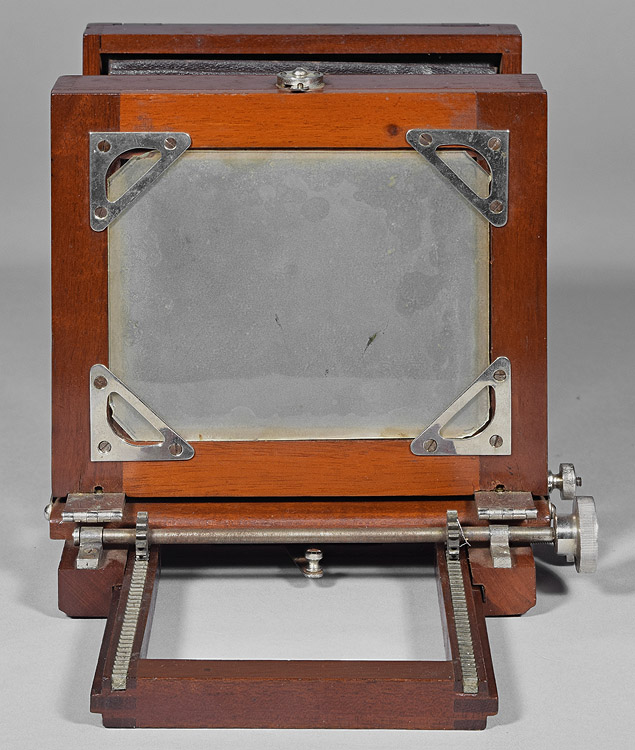
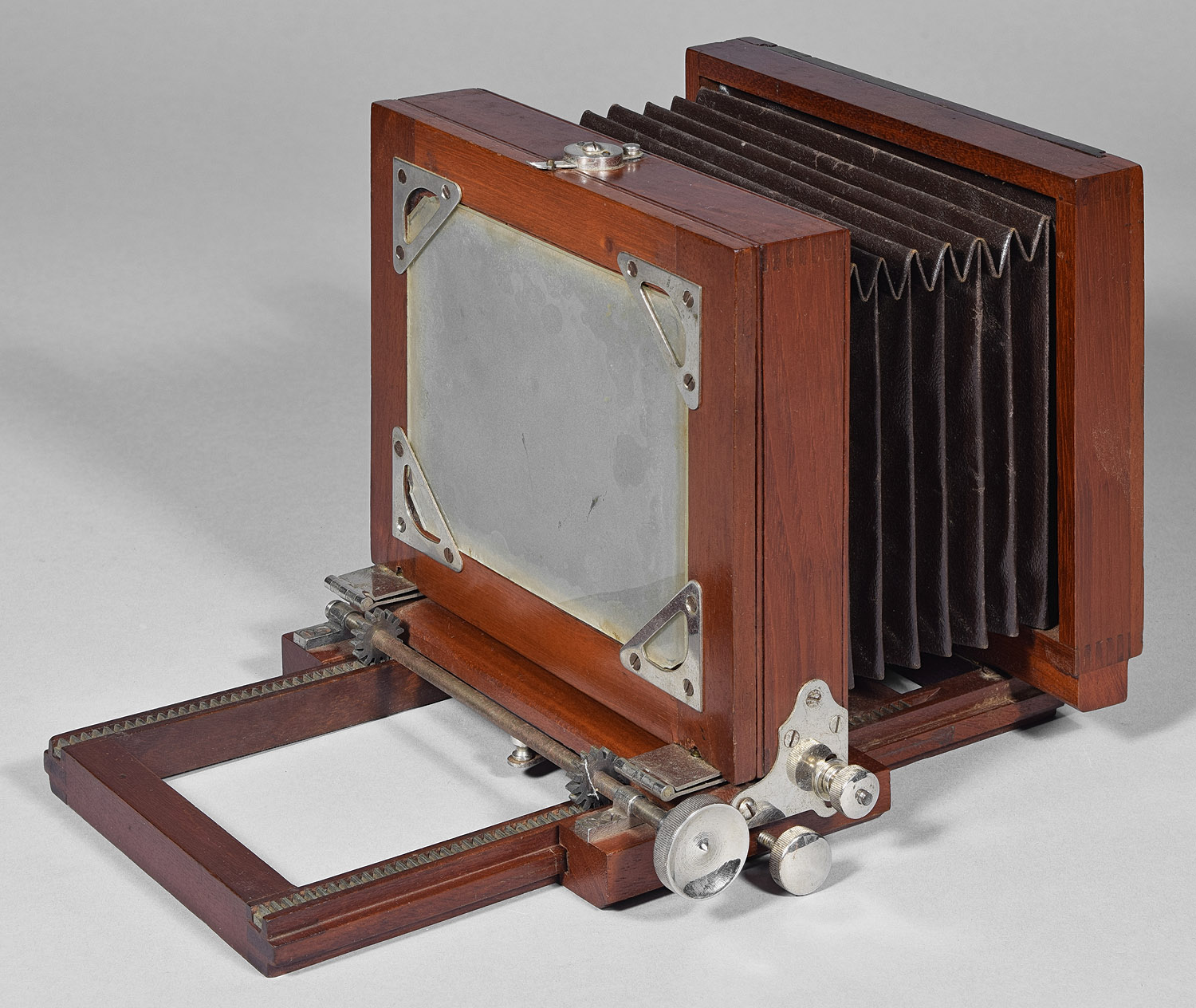
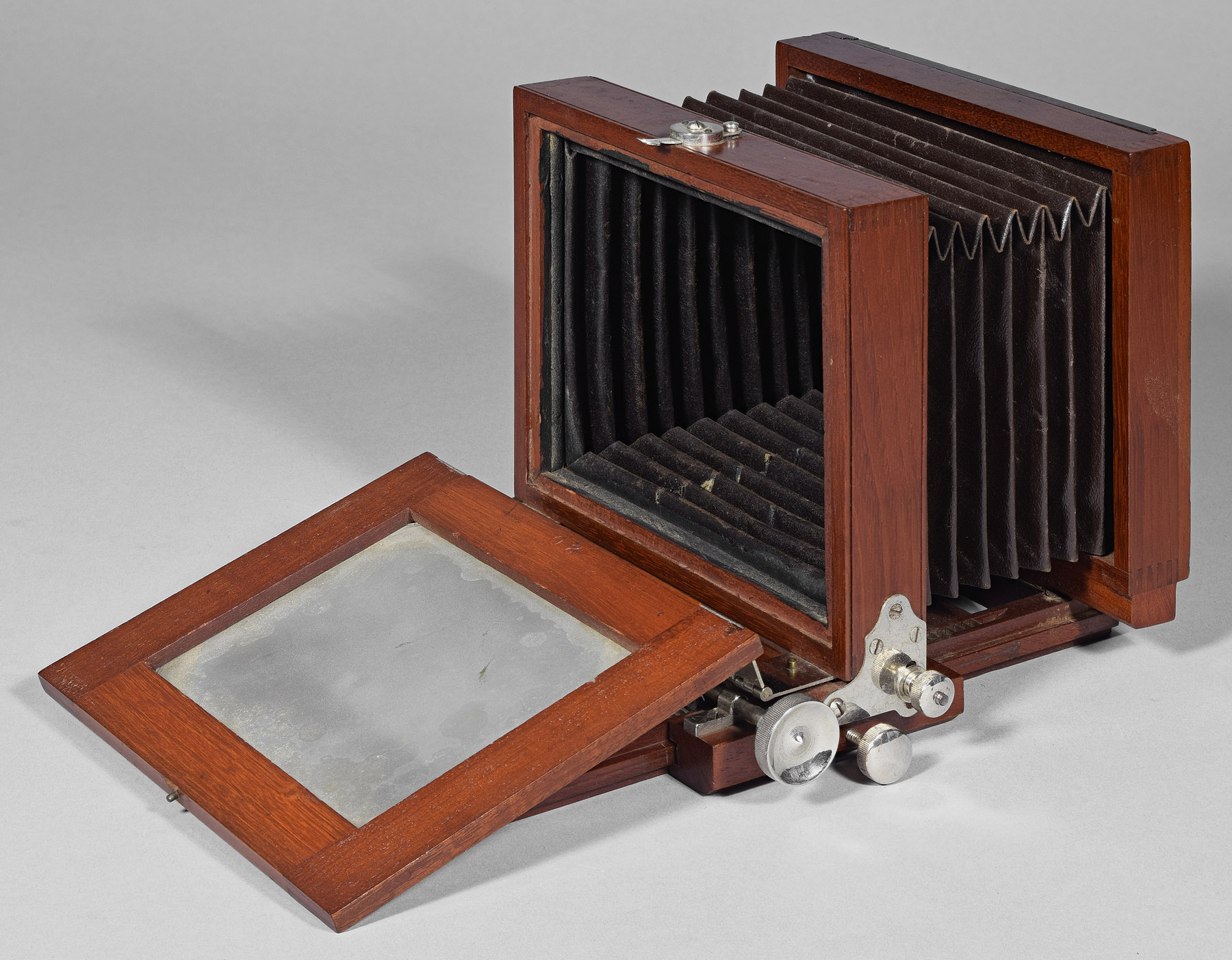
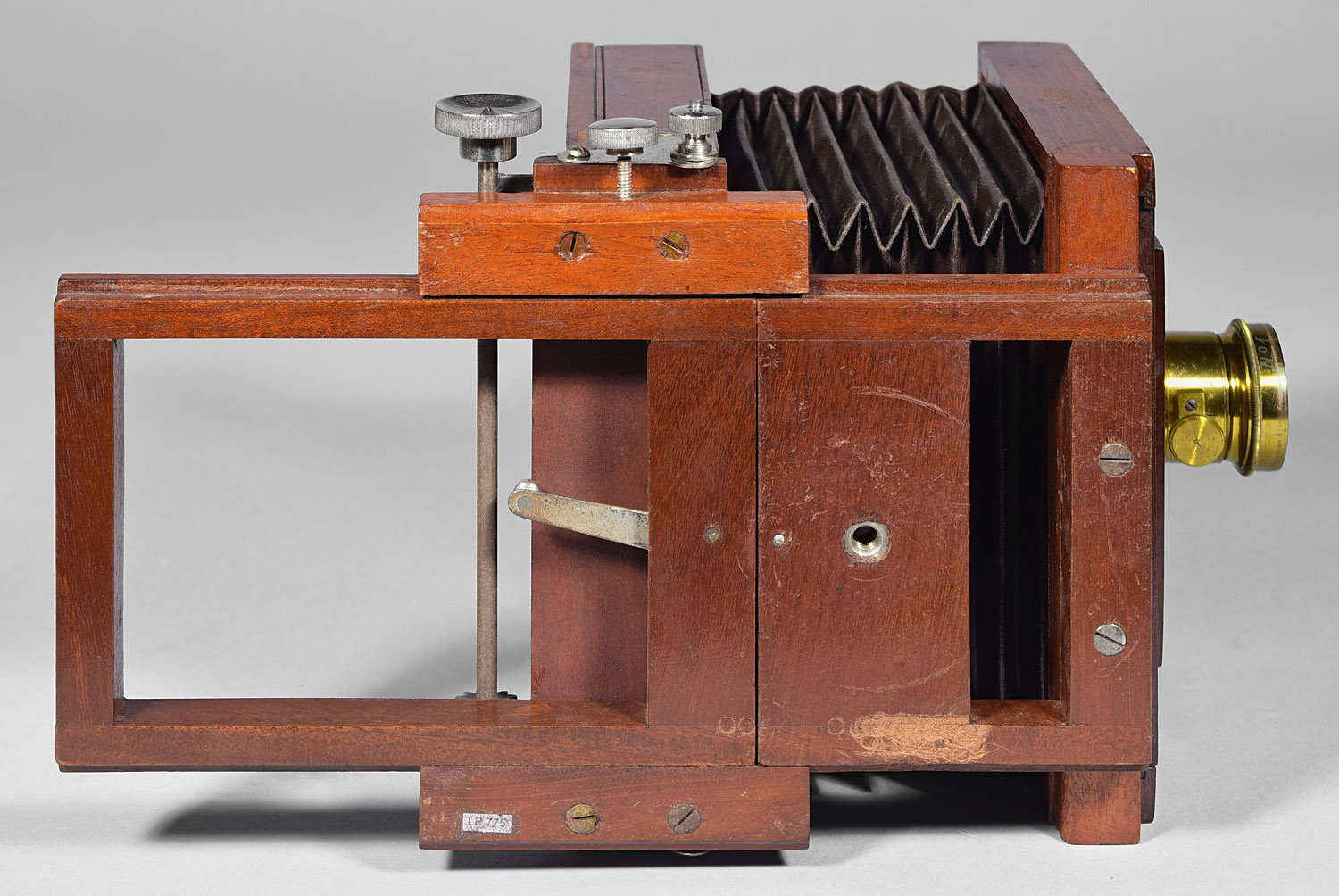
Construction: back focus, no or single
swing, gears on top of base, reversing by two tripod mounts, wooden
track guides
Materials: mahogany body, nickeled
hardware, maroon fabric bellows
Sizes Offered: 4x5; 4¼x6½; 5x8
Notes:
This is a camera
similar to and the approximately the same
price as another Rochester Optical's model, the
New Model
Improved, in that it has back focus, a
non-tapering bellows, and rack and pinion focus. The feature that
differentiates the Commodore is that it has a shifting as well as rising
lens board arrangement, a feature which is quite rare amongst Rochester
Optical Co. models. It appears that the only other Rochester
Optical model to have a shifting and rising front (or as Rochester
Optical calls it in the Commodore advertisement: double
sliding front) is the c.1883
American
Challenge Camera (Wood Base), in itself one of the rarest
Rochester Optical models. The Commodore
advertisements also mention rack and pinion focusing. There are
two Commodore variations known.
The bed of this model is solid mahogany, like the
earliest variation of Rochester Optical's New Model, the
New Model
Variation 1. But whereas the New Model Variation 1
has a beveled outer edge of its base, the Commodore Variation 1
has the later-type tongue & groove edge, like the
New Model
Variation 1.5. The Commodore Variation 1 also has
the same narrow frame around the ground glass associated with the
earliest Rochester Optical Co. models, like the
New Model
Variation 1,
New Model
Variation 1.5, and
New Model
Improved Variation 1. These features: the shifting and
rising front, the solid base with tongue & groove edge, and the
narrow-type frame, are all pictured in the catalog engravings from the
1886 catalog. In addition, the example of this variation has a
shifting lens board held in by two large fixed tabs at the bottom and a
movable clip at the top, rather than the usual hidden dado on the top
and bottom.
This variation has the more normal frame-type base,
rather than the solid-type base of Variation 1. Its rack
and pinon focus knob is entirely behind the rear standard, rather than
at the front of the rear standard as on the Variation 1. In
all details except the shifting lens board, the Commodore Variation 2
appears to be identical to the
New Model
Improved Variation 2. So far, no engravings of this
variation are known, but ROC catalogs from the late 1880's, where they
would have appeared, are rare. The example of this variation has
the usual hidden dado for its shifting lens board.
